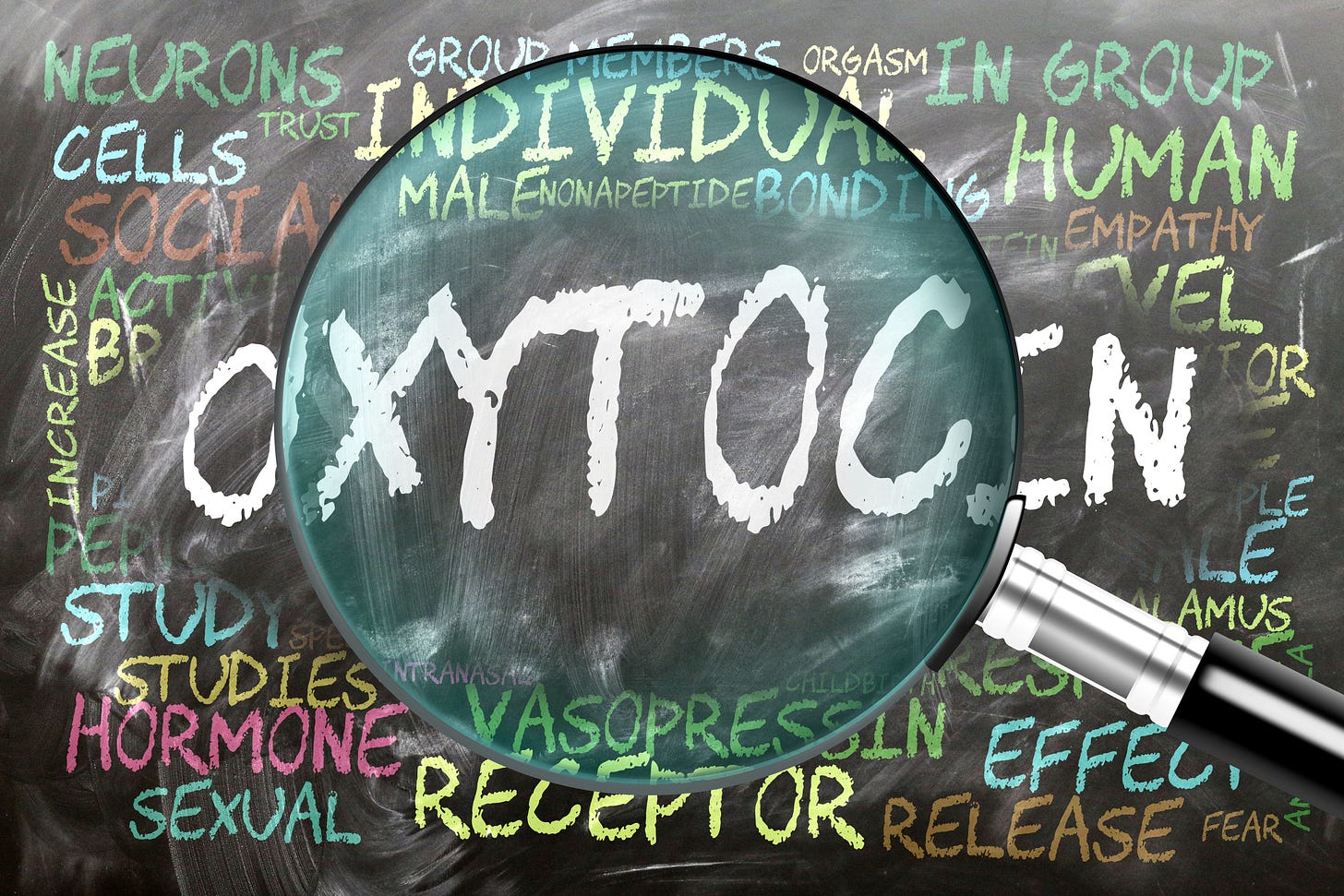Oxytocin – Bonding, and Murder!
Why oxytocin is not just the innocent cuddle chemical
Oxytocin has been called the cuddle chemical and the love hormone. Not without reason. But on closer inspection we find that though it is involved in all those nice things it also has a dark side.
Oxytocin has had a good rap in neuroscience circles, and I have been as guilty of any as promoting it as the cuddle chemical or the love hormone. This hype has long since subsided, but to understand the story we have to go to the research that brought it into the spotlight, which is research into prairie voles, field mice that is. Yup, you read correctly.
Sue Carter is Director of the Kinsey Institute at Indiana University, and it is her pioneering work into prairie voles including oxytocin and vasopressin that lead to the rise of oxytocin as the “love hormone”, this did not come about until another famed academic Professor Zak published a number of popular articles and TED talks on the subject.
What Carter first researched was the question of what makes prairie voles monogamous, or not. On first look they are like human beings living in pair-bond relationships. But on second look and with genetic analysis, well it was discovered the little critters had been sleeping around! What Carter and others found is that by altering oxytocin levels in the voles they could increase or decrease their monogamous behaviours (i.e. making them more monogamous, faithful) and respective bonding behaviours such as cuddling, nuzzling, and cleaning each other. Good news then! Yes, but there then followed a few twists and turns.
Keep reading with a 7-day free trial
Subscribe to leading brains Review to keep reading this post and get 7 days of free access to the full post archives.




